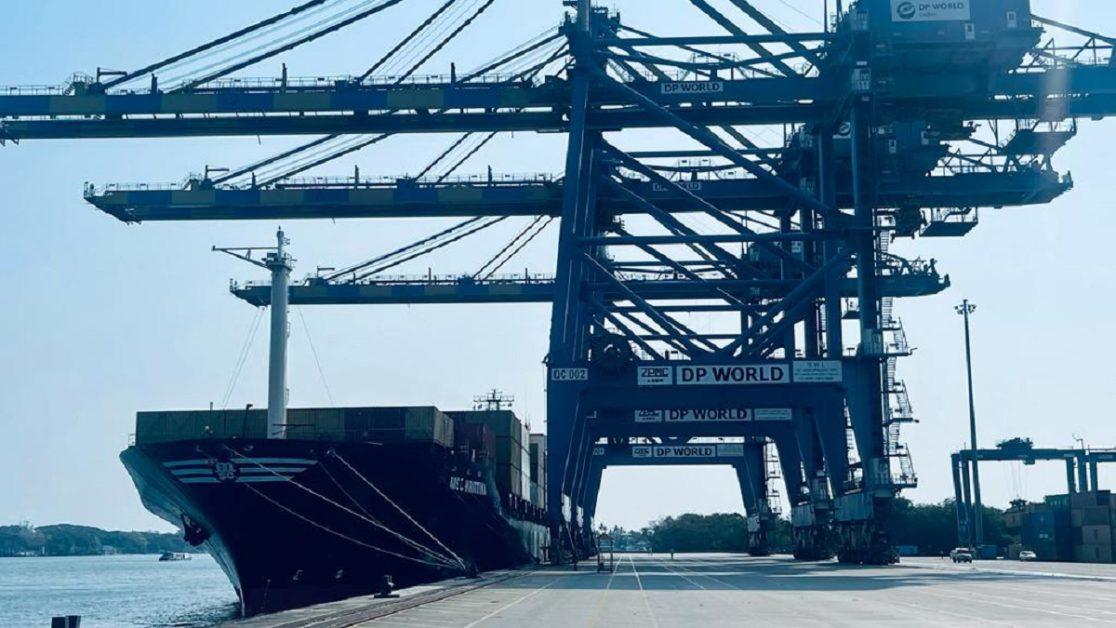As part of measures to circumvent the impacts of Western economic sanctions and to support the growth of the North Sea Route, Russia has opened one of its strategic ports in the Arctic to foreign cargo ships. In a development that is designed to promote and increase trade with new partners, particularly in Asia and Africa, Moscow issued a decree expanding the list of seaports open to foreign ships to include the port of Tiksi.
Located on the coast of the Laptev Sea in the north of Yakutia, the port will become an international facility and will be open to foreign ships, according to the decree signed by Prime Minister Mikhail Mishustin. Previously, only the Arctic ports of Arkhangelsk and Murmansk were designated as “international ports” and open to foreign ships. However, neither is located along the NSR.
Russia attributed the decision to open Tiksi to foreign ships to new trade realities that are emerging due to “conditions of external sanctions pressure” by the West. The sanctions have prompted the country to build new trade partnerships specifically with Asian and African countries that have openly refused to condemn Kremlin’s aggression in Ukraine.
“The implementation of this project will contribute to the creation of new transshipment facilities, creation of new jobs, development not only of the port itself, but also the Northern Sea Route, which is especially important in conditions of external sanctions pressure,” said the Kremlin in a statement.
The U.S. and Western Allies however are also targeting the development of the NSR and the ports as part of the sanction programs. The United States in the list of over 200 entities, individuals, vessels, and aircraft sanctioned or blocked in May included the development of the Arctic port of Indiga and Akvamarin Limited developer of the port. Four companies involved in the planning of the port were added to the designated list.
Russia despite the efforts by the West, contends the port of Tiksi has the potential to become a major trade hub considering its strategic location along the NSR, which they report is experiencing a significant increase in traffic despite the Ukraine war and sanctions. With its designation as an international port, Moscow now intends to create conditions for the launch of an investment project that will entail the construction of a deep-water hub port near the village of Naiba. The overall aim is to ensure that Tiksi’s cargo turnover hits about 30 million tonnes annually.
Owing to its location roughly at the halfway point between Europe and Asia, the new facility is not only an ideal stopover and reloading point along the NSR but could significantly enhance trade between Russia and Asia countries, a majority of which have helped the Kremlin escape any major sanctions-instigated economic crisis.
Since the Russian invasion of Ukraine in February last year, Moscow’s trade with Asian giants including China and India has increased significantly. Overall trade with China rose by 34 percent in 2022 to $190 billion. Trade with India has hit a record of $39.8 billion making Russia one of India’s five largest trading partners for the first time in history.
Moscow is also courting new trading partners and just last month it opened a direct shipping route with Pakistan to facilitate more trade. Containership Crystal St Petersburg undertook the maiden voyage from Russia to Karachi port, a journey that took 21 days. The opening of the port of Tiksi to foreign ships could significantly increase traffic on the NSR. Already, traffic on the route has hit unprecedented highs despite most global shipping liners not participating with the route. Cargo volume along the route surpassed the official target of 32 million tonnes, hitting 34 million tonnes in 2022. Though oil and gas, coal, and iron ore remain the key products on the route, general cargo is also recording growth.







